- Established 1982 -HOME: www.hiltonpond.org
THIS WEEK at HILTON POND Subscribe for free to our award-winning nature newsletter (Back to Preceding Week; on to Next Week) |
BOOM! INTRODUCTION All day on Easter Sunday (12 April 2020) we'd been hearing ominous reports of bad storms to the west of Hilton Pond Center, so as darkness approached that evening I once again checked local and regional forecasts. They all said the same thing: The Upper Piedmont of South Carolina in which the Center is located was almost certainly in for a night of potentially dangerous weather that could include hail, strong gusts, heavy rainfall, and possible tornadoes. Even optimistic maps like the one below said Hilton Pond was right on the edge of the area with 30% chance of damaging winds.
All text, maps, charts & photos © Hilton Pond Center Just to be safe, wife Susan and I brought in porch furniture that might get blown about and then moved my full-sized van to part of the driveway where there were no overhanging trees. I elected to leave in place various feeders and traps I use for capturing birds for banding and also secured all my mist nets within their respective net lanes. After fully charging our cell phones and turning up their volume in case of a weather alerts, we bedded down for the night--noticing there was no wind or rain outside at 10 p.m.
PREFACE Things changed abruptly shortly after 4 a.m. when Susan and I both awoke to the sound of strong southwesterly gusts and heavy rain cascading into gutters outside the bedroom window of our old farmhouse. We lay there, half-asleep, listening to wind whistling through the trees until at exactly 4:23 a.m. a thunderous BOOM! shook the old farmhouse and jolted us fully awake. I was pretty certain a large tree had fallen and was concerned it might have toppled onto our nearly new roof, so I arose and went out onto the front porch to check. Since it was raining very hard, I simply shined a flashlight along both sides of the house. Seeing no damage, I went back in and lay back down for a few minutes until curiosity got the best of me. I got back up, put on shorts, a cap, and slicker, and wandered back out in the rain. There, as I fanned the beam of my electric torch through the downpour, I began to realize just how significant that thunderous BOOM! had been. (Allow me now to jump ahead a few hours to describe the scene by daylight. Before I do I should mention a quick preliminary walk-around of the old farmhouse indicated no structural damage at all, including our new roof and gutters. For this, Susan and I are most grateful.)
THE REST OF THE STORY As day broke on the morning of 13 April, it appeared the storm had passed. There was no more wind or rain, and while I sat in semi-darkness at my office window gazing westward, I could see a sliver of blue sky (below) as clouds moved off to the northeast.
All text, maps, charts & photos © Hilton Pond Center By dim light of dawn I could make out the silhouette of a tall Shagbark Hickory, Carya ovata (above left), directly behind the old farmhouse. Since this stately tree still stood strong, that BOOM! we heard in the night must have come from something else. At sunrise, it was time to go out and investigate fully.
All text, maps, charts & photos © Hilton Pond Center As daylight intensified, I walked down the steps off the back deck toward the hickory; beside it, a mist net perpendicular to the deck was still furled and safely in place (above left), but the net just to its right was pulled down to the ground and a net pole was bent, indicating something had fallen onto that array. A big dead limb from the hickory or some other overhanging tree, perhaps? Not hardly. Check out the reddish area just to left of center in the photo above and guess that that might be. All text, maps, charts & photos © Hilton Pond Center (Click on image above for a larger version in a new browser window) If you guessed red clay from a tip-up mound you would be correct, and it was no small tip-up mound. The loud BOOM! in the night came as the largest tree on the Center's 11 acres--a hundred-plus-year-old Southern Red Oak, Quercus falcata, nearly a hundred feet tall--had gotten blown over by gale force winds and crashed to the ground with incredible force, taking with it a startling and disturbing amount of other vegetation. For scale, look at the photo above (click on it, if you like, to enlarge the image in a separate browser window), and keep in mind the metal birdbath at left is four-feet square. To extrapolate, the freshly exposed root ball of this old oak is nearly ten feet tall!
All text, maps, charts & photos © Hilton Pond Center Providing another example of scale, Susan took a photo of me (above) atop the fallen oak after I'd had time to clear a safe access onto the massive trunk. I wasn't exaggerating when I said the tip-up mound reached ten feet--nor when I say the huge oak reached slightly more than six feet in diameter and nearly 19 feet in circumference at its base! And that gaping hole in the ground where the roots pulled up--THAT was four feet deep! BOOM!
All text, maps, charts & photos © Hilton Pond Center From my perch atop the base of the monstrous oak (above) I could see how straight the main trunk was, stretching 15 feet to the first stubby branch on the right, then another 13 feet to the next branch, and 20 more feet to where the tree started to fork into "smaller" branches. That's 48 total feet of straight, formerly vertical trunk that was still nearly three feet in diameter at the fork! Massive! No wonder there was a BOOM!
All text, maps, charts & photos © Hilton Pond Center The amount of dead-fall beyond the fork in the oak's main trunk was so thick (above) I had trouble penetrating the jumble to assess damage. Much of what you see above was twigs and leaves from the oak itself, but there was plenty of additional breakage from other vegetation. One thing I noticed right off: The pungent but pleasing odor of freshly exposed red oak wood.
All text, maps, charts & photos © Hilton Pond Center When I finally was able to work my way into the area above the fork and to look back at the distant trunk base (above), it became pretty obvious the mass of this tree and its limbs was truly substantial. These were BIG logs, and there were many, many tons of woody material now on the ground. BOOM! (And remember, the root ball is approximately 70 feet away in this image.)
All text, maps, charts & photos © Hilton Pond Center By the way, in the photo before the one immediately above, that little pale-colored spur sticking straight up from the far end of the trunk wasn't so "little" after all. In fact, as revealed by a closer view (above), the spur is from the base of a major limb that split from the main trunk--thrusting upwards a slab of raw wood six feet long and a foot wide at the base. BOOM!
All text, maps, charts & photos © Hilton Pond Center As I explored the wrecked vegetation, one of the first questions in my mind was what had allowed this giant Southern Red Oak to topple in the first place. Back in 2015 an equally enormous, equally ancient White Oak had fallen at Hilton Pond Center on a bright and sunny day, snapped off above ground level because of undetected internal rot. This latest tree-fall, however, came when strong but not tornadic winds uprooted it completely and formed the tip-up mound. As shown above, what may have been weakened, unhealthy roots simply broke as the tree flipped and made that resounding BOOM! It's also plausible that after a very rainy winter the ground was so soft and saturated that another 2.26" of precipitation during the night of 12-13 April--coupled with gusts of at least 40-50 mph--was just too much for the old oak.
All text, maps, charts & photos © Hilton Pond Center Regardless of the cause of the big tree's demise, we made numerous discoveries as we continued our 13 April damage survey. One of the most noticeable results of the giant oak coming down was the big "hole in the sky" where limbs and leaves used to be. The photo above, taken from a corner of the back deck just outside my office window, revealed a much different view than just the day before. This newly created expanse of blue--roughly 100 feet in diameter--will allow future looks at birds soaring over Hilton Pond, but it means there will be more heat and a lot less shade on my office windows when the summer sun gets high in the sky.
All text, maps, charts & photos © Hilton Pond Center Also considerably different was the view from the kitchen window of the Center's old farmhouse. Directly behind my traps and one of our sunflower seed tube feeders was a new wall of oak leaves hanging beneath a long tree limb (above). This limb had been directly over our kitchen roof the day before, and it's a wonderment the big tree fell in such a way as to twist this branch away from the house. Whew!
All text, maps, charts & photos © Hilton Pond Center The limb also fell without damaging one of our main platform feeders (above) that holds a four-cell Potter trap I use to catch birds for banding. The distance from the edge of the cone-shaped predator guard to the ten-inch-diameter branch was less than a foot!
All text, maps, charts & photos © Hilton Pond Center I was dumbstruck by the size of the big red oak as it lay on the ground before me, but equally as impressive was the amount of collateral damage caused during the big Boom! Mature trees like a 14-inch-diameter Common Hackberry, Celtis occidentalis (above), were snapped off like matchsticks . . .
All text, maps, charts & photos © Hilton Pond Center . . . while other trees like this Winged Elm (above) were bent over at a right angle 40 feet above ground, leaving a few dangerous "widow-makers" . . .
All text, maps, charts & photos © Hilton Pond Center . . . and still other slightly smaller trees and saplings (above) were forced to earth, snapped, splintered, and shredded . . .
All text, maps, charts & photos © Hilton Pond Center . . . and even a 60-foot-tall Black Walnut, Juglans nigra (above) saw an 18-inch limb sheared off and thrown to the ground. BOOM! Just amazing!
All text, maps, charts & photos © Hilton Pond Center All around the side yard were big wads of flowers (above) produced this spring by the ancient Southern Red Oak. These countless tassels were destined to yield bushels of acorns if 2020 turns out to be a good mast year. Unfortunately, Blue Jays and woodpeckers and maybe even Wild Turkeys that dine upon such fare will be looking elsewhere for lunch this fall. (The only good news here is I no longer will have to spend hours and hours each spring day removing oak flowers from mist nests as they fall from the oak, nor will I have to extract oak leaves all day long come autumn. To be honest, those are mixed blessings I could do without.)
All text, maps, charts & photos © Hilton Pond Center At Hilton Pond Center, one of the best wildflower spots has been between the 4'x4' metal bird bath and the base of the big red oak. When the tree fell, the tip-up mound elevated much of this floral habitat skyward, taking with it such species as Jack-in-the-Pulpit, Spring Beauty, and even Toadshade Trilliums, Trillium sessile (above). I'm hopeful in coming weeks I'll be able to rescue these herbaceous specimens and relocate them to another spot nearby.
All text, maps, charts & photos © Hilton Pond Center Something absolutely not salvageable that pains me are monstrous vines of Trumpet Creeper, Campsis radicans, that grew on the trunks of the big oak and several other nearby trees--including a mature Winged Elm, Ulmus alata, with broken limb (above). Monstrous may seem like an exaggerative term when applied to Trumpet Creeper, but some of these semi-woody vines were more than 30 years old and up to four inches in diameter, as shown in the photo. A few grew all the way into the canopy, competing with the tallest trees for sunlight. Not being very flexible, many of these vines simply snapped from the force of falling vegetation; this, I suspect will result in outright death, although it's possible new vines will sprout from remaining roots. I was quite proud of those thick-set Trumpet Creeper vines, in part because their nectar-rich orange flowers fed so many Ruby-throated Hummingbirds at Hilton Pond Center through the years.
All text, maps, charts & photos © Hilton Pond Center Some effects of the loss of the big oak and ancillary vegetation won’t be known for weeks or even years, but we do know some animals felt immediate impact. For a decade or so a nest box stood on a metal pole not far from the kitchen window of the old farmhouse. Its hole was sized to admit Eastern Bluebirds and both that species and Carolina Chickadees have made good use of the box--including this year when a female bluebird had just begun incubating five eggs a few days before the storm. One of my first questions upon seeing the fallen limbs of the big tree was whether the box and nest had escaped unscathed. It took couple of days to work through the jumble of broken vegetation, only to find that the nest box (above) had indeed been shattered and knocked to the ground by a thick oak limb. I also found a cluster pine needles that made the nest, but there was no sign of eggs; a scavenger undoubtedly had gotten to them quickly, but what of the incubating female? Could she have made it through?
All text, maps, charts & photos © Hilton Pond Center Alas, under a big splintered limb not far away from the smashed nest box was a scattering of blue wing and tail feathers (above)--almost certainly the remains of the mother bluebird. I suspect she was killed outright when the tree fell, only to be found soon thereafter, perhaps by by the same scavenger that consumed her developing embryos. Such is the cycle of life, and of death.
All text, maps, charts & photos © Hilton Pond Center There's no doubt there were lots of natural losses from that big storm-related BOOM! Even so, Susan and I are deeply grateful the old farmhouse was undamaged, and our human accouterments almost untouched. Although my numerous bird traps were spared any damage from tree-fall, some of the Center's mist nets (above) did not fare well.
All text, maps, charts & photos © Hilton Pond Center With funding, nets and poles can be replaced, of course, but what has been lost forever are four net lanes that were altered or destroyed by the big tree when it fell. These lanes have been in more-or-less constant use for most of the 39 years I've banded birds at Hilton Pond Center, and their loss creates a big variable. Some folks have suggested I just create four new net lanes, but it's not that simple. There are already 36 established net locations sampling virtually all micro-habitats on our 11-acre property, and none have been as productive for catching birds as the four that were directly affected by the recent tree-fall. Even the fourth lane (above) with the non-repairable net will be less effective now that half of it is exposed to sunlight that makes the mesh more visible.
So where do we go post-storm at Hilton Pond Center? There's nothing I can do to fix the net lane situation, so I'll just keep on keeping on--putting an asterisk in the journal to indicate things changed on 13 April 2020 after we heard the big BOOM! I'll also keep track of new trends in the presence and abundance of birds and other creatures, and I'll be watching to see how vegetative regeneration plays out.
All text, maps, charts & photos © Hilton Pond Center I'll have a little impact of my own on this whole process, in part because for nearly four decades our main winter heat source for the old farmhouse has been a big wood stove in the main hall--and there's a heckuva lot of new firewood to be harvested and stacked (archival photo, above).
All text, maps, charts & photos © Hilton Pond Center It's apparent that much was lost because of the BOOM!, not the least being the magnificent Southern Oak Tree itself--a tree that played many roles in nature. (In a photo from December 2018, above, the now-fallen oak is the tallest tree across Hilton Pond.) Think of the warblers that are arriving this spring, only to find no oak leaves from which to glean caterpillars that fuel their migration. Then there are those jays that will need to go elsewhere for red oak acorns to cache each fall. Did the old oak have cavities housing eggs or chicks of Downy Woodpeckers. Did a pair of Blue-gray Gnatcatchers already have a nest going in one of the oak's once-lofty branches? And what about those Ruby-throated Hummingbirds returning to Hilton Pond this spring, fully expecting a cornucopia of Trumpet Creeper blossoms to provide them with a daily dose of carbohydrates? What will they find to eat?
All text, maps, charts & photos © Hilton Pond Center It'll all be different now, but since there's nothing I can do about it except watch and document what happens, I choose to concentrate on the positives. When I went out early that first morning after the tree-fall, the first animal I saw when I ducked under a fallen limb was a Gray Treefrog, Dryophytes versicolor (above), perched horizontally now that its tree was no longer vertical. The two-inch-long amphibian barely moved--perhaps still sleepy after a stormy night--but it survived.
All text, maps, charts & photos © Hilton Pond Center Much more animated was a breeding-age Eastern Gray Squirrel, Sciurus carolinensis (above), enthroned on a fallen limb outside the kitchen window, showing off his maleness and maybe wondering where his fantastic new outdoor playground came from. This squirrel survived, and he quickly discovered he now has a much easier take-off point for his leaps to the bird feeders.
All text, maps, charts & photos © Hilton Pond Center On the trunk of a sapling of Box Elder, Acer negundo (above), a long-tailed male Carolina Anole, Anolis carolinensis, likewise survived the storm. He was giving me the eye as he took advantage of a new sunny spot created when the big oak collapsed earthward. (Just beneath him is a leaf fragment plastered to the bark by high winds the night before.)
All text, maps, charts & photos © Hilton Pond Center And bunches of birds that survived the wind-blown night descended on the Center's big tube feeder to gobble down sunflower seeds: Male and female Northern Cardinals and American Goldfinches and trio of male House Finches shared the feeder tray and ports in the photo above, only to be replaced a few minutes later by a Red-bellied Woodpecker, White-breasted Nuthatch, Carolina Chickadees, and Tufted Titmice. Oh, and lest I forget, bright and early on the morning after the big blow the first female Ruby-throated Hummingbird of the season appeared at the sugar water feeder hanging outside my office. Was she a good sign? Maybe so, and she was a survivor--of a major storm AND a long-distance migration from the Neotropics!
All text, maps, charts & photos © Hilton Pond Center Maybe there was one more sign that things survive and life goes on at Hilton Pond Center. A couple of days after the storm and the big BOOM!, a male Eastern Bluebird started visiting a nest box that had been ignored so far this spring. He made many trips to the unoccupied facility, perching on the roof, going in and out of the access hole, and singing loudly from the top of the pond-side snag to which the box was nailed. Later that same day a female joined him and within 24 hours they both were carrying nesting material and setting up shop in the box. Was this the male that fertilized those five eggs that were lost in the box destroyed by the storm? Was he able to attract an unpaired female so soon after the nest was destroyed? I'll never know for sure, but it sure makes a story worth watching--a story about survival despite a BOOM!
All text, maps, charts & photos © Hilton Pond Center Yes, here at the Center a big, strong, devastating storm blew through and wreaked havoc with an important and beloved subset of our 11 acres. A majestic hundred-year-old Southern Red Oak died. Wildflowers got uprooted, vines snapped, mist nets tore, net lanes vanished, bluebird eggs never hatched. Being human, I can grieve a little over the loss of a tree I knew and cherished for nearly 40 of its 100 years, but being a scientist I realize things are constantly changing. (Besides, a LOT of local things DID survive--including my long-term banding research with Ruby-throated Hummingbirds, adult male, above.) Change is the way Mother Nature works, and far be it from me to pick a fight with Mother Nature. She ALWAYS wins, so if I and others simply sit back and observe, we can all take both solace and joy from seeing what happens, day-to-day, week-to-week, year after year--hoping all the while there's no more BOOM! anytime soon at Hilton Pond Center. Happy Post-storm Nature Watching!
FUNDRAISER At Hilton Pond Center we were excited on 2 April 2020 to band our 70,000th bird since 1982. Some of you have already helped mark that significant milestone with a donation supporting our initiatives in environmental education, field research, and resource conservation. Now, with the loss of our massive Southern Red Oak, with collateral damage to other vegetation and habitats, To help us get past this latest stumbling block, please consider making a donation through Facebook at the link above. You can also donate via PayPal, at Network for Good, or through the Center's new Venmo account (@Bill-Hiltonjr). Personal checks can be sent to 1432 DeVinney Road, York SC 29745. Since we're a non-profit, all gifts should be fully tax-deductible. Thanks for whatever assistance you can provide as Hilton Pond Center buckles down and continues to move forward as the most active year-round bird banding station in the Carolinas. All text, maps, charts & photos © Hilton Pond Center
Checks also can be sent to Hilton Pond Center at: All contributions are tax-deductible on your Don't forget to scroll down for Nature Notes & Photos, |
|---|
|
"This Week at Hilton Pond" is written and photographed by Bill Hilton Jr., executive director of Hilton Pond Center for Piedmont Natural History
|
|
|
Please refer "This Week at Hilton Pond" to others by clicking on this button: |
|

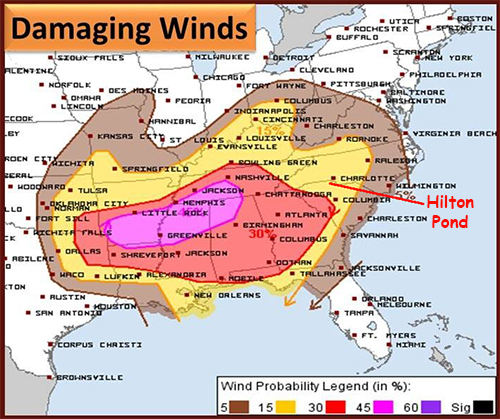
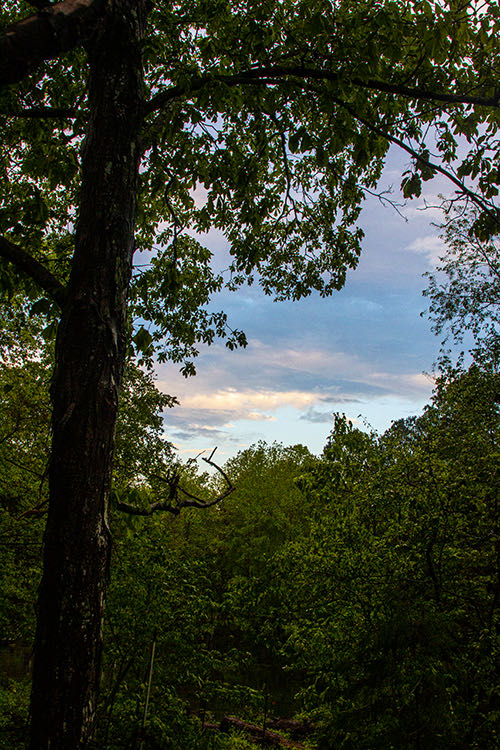
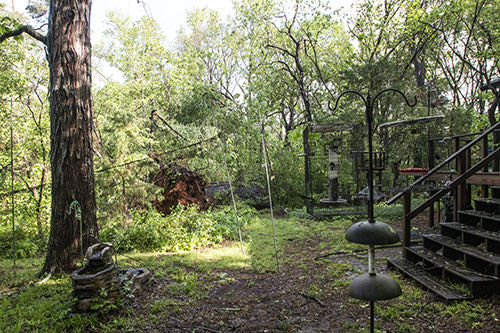
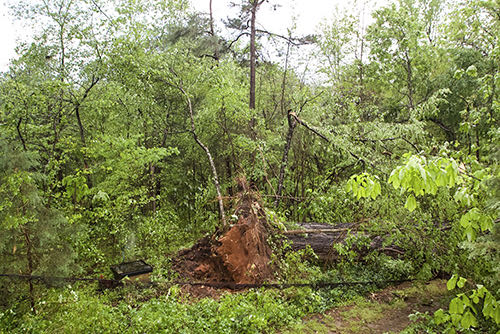
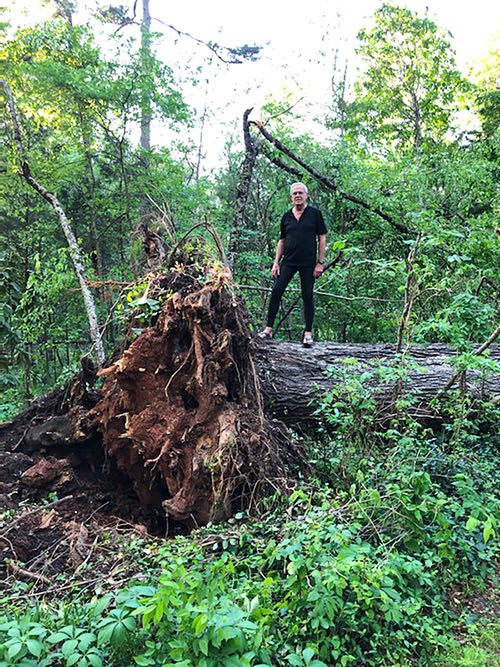
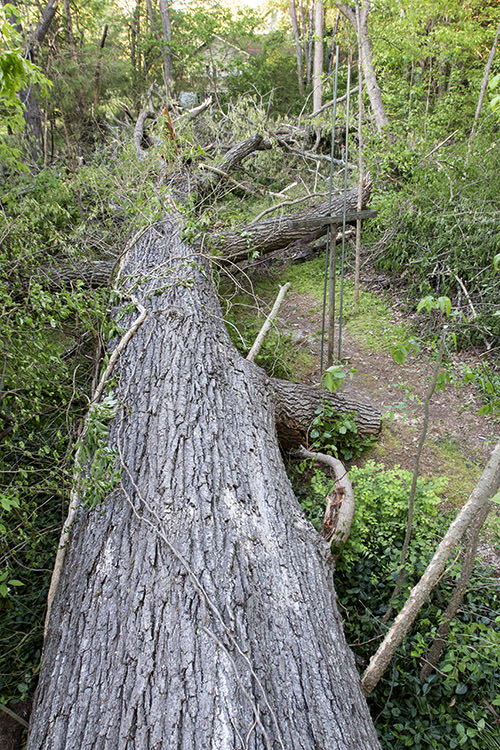
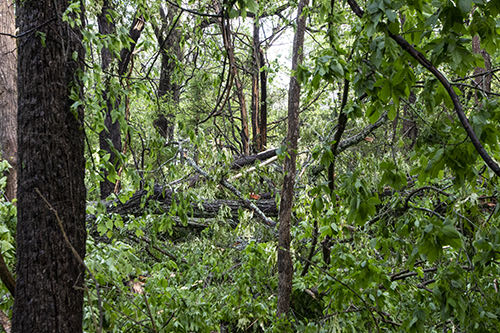
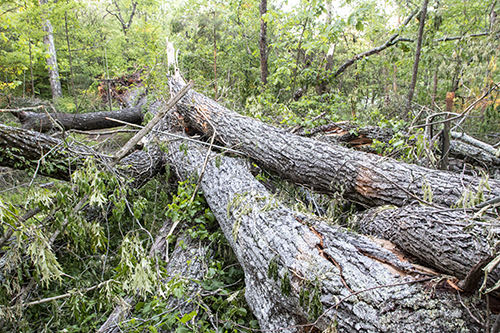
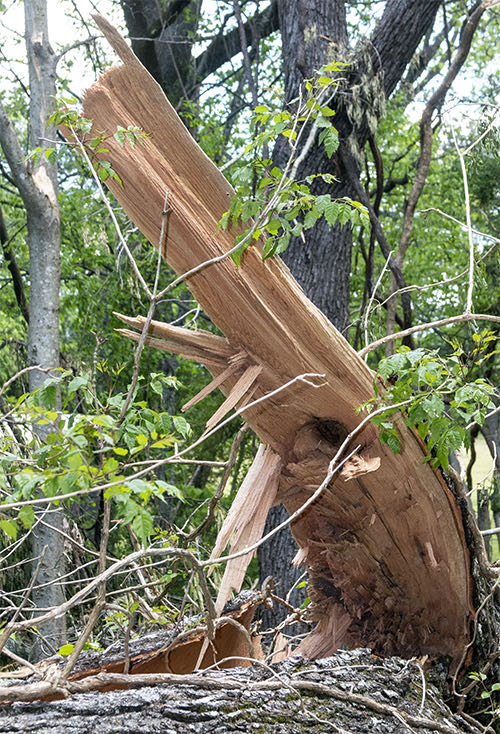
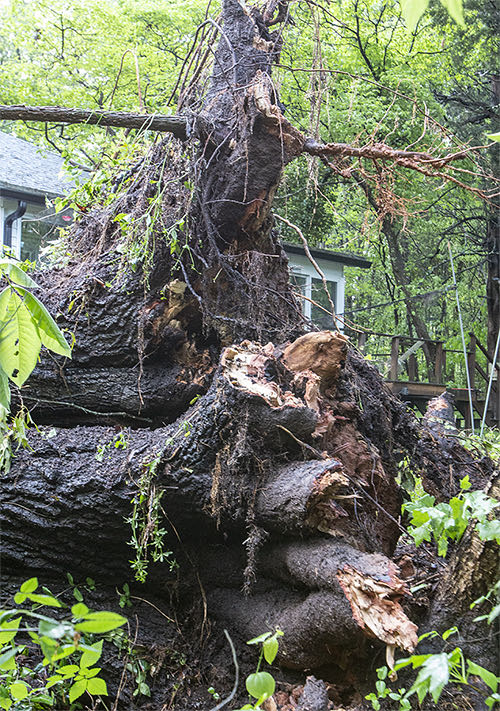
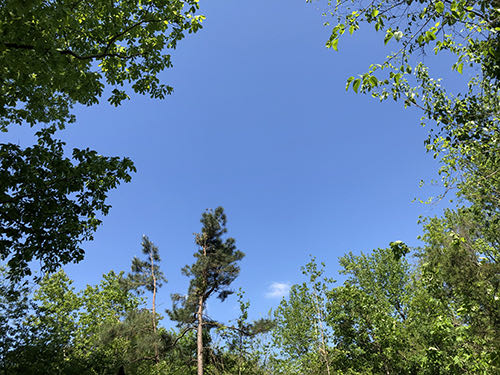
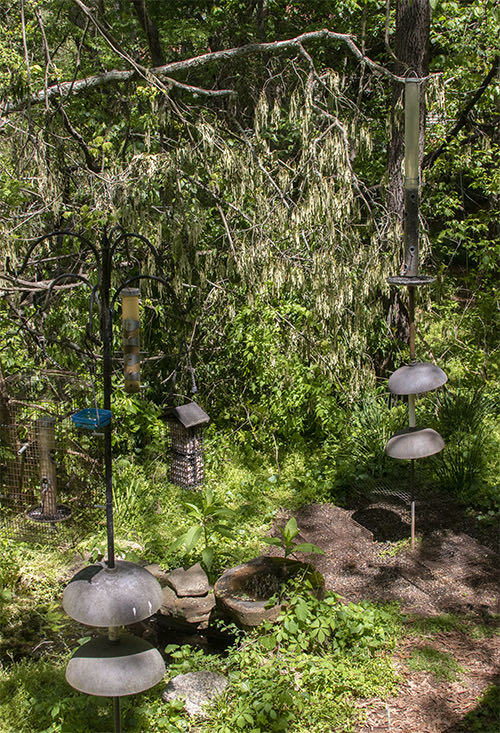
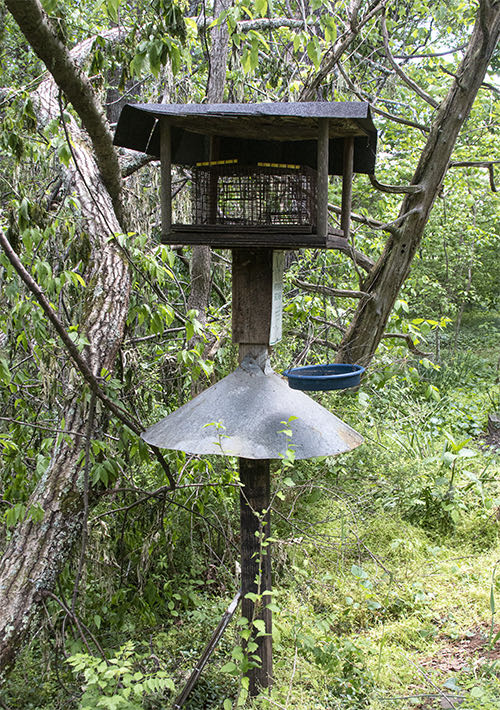
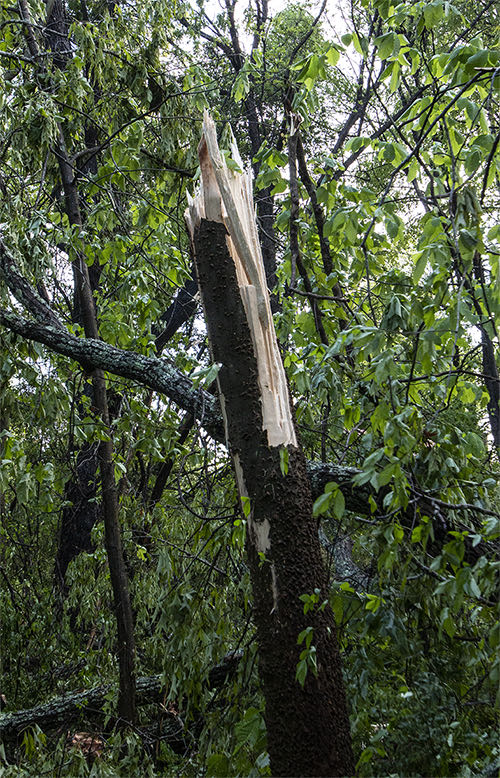
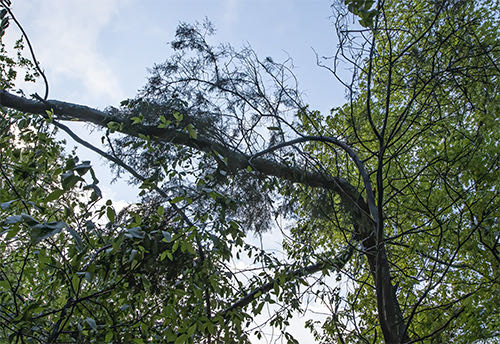
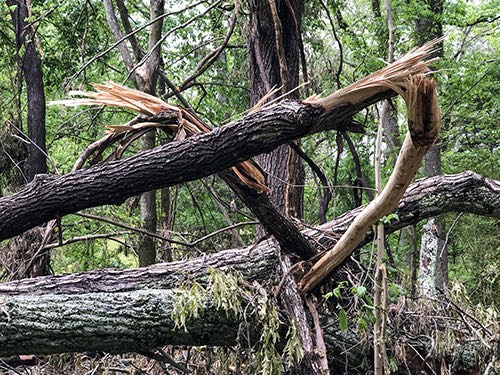
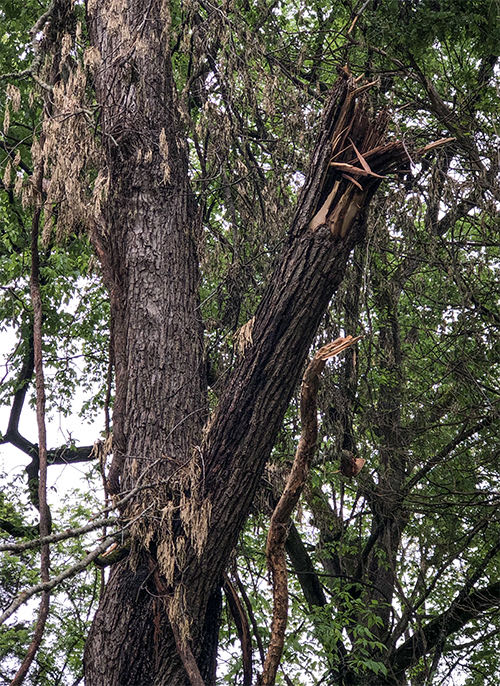
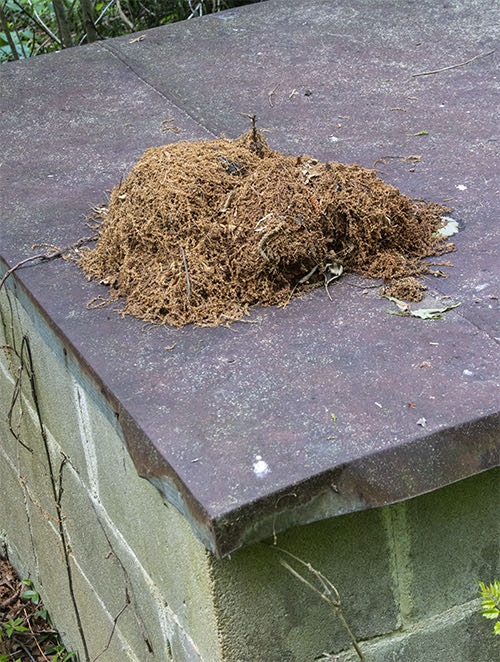
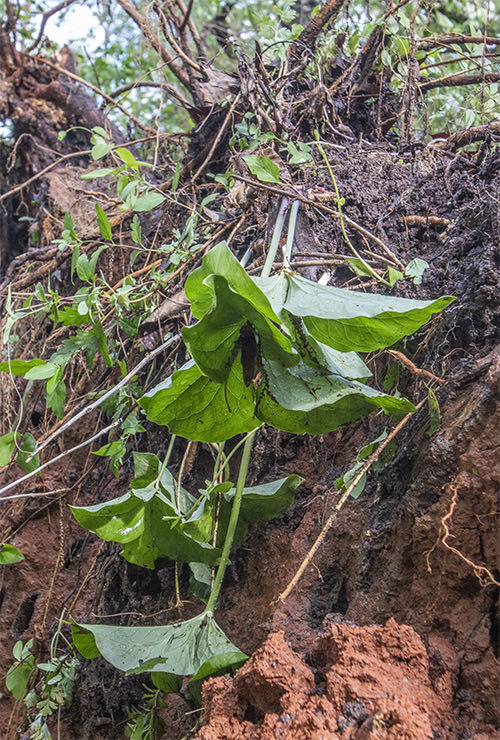
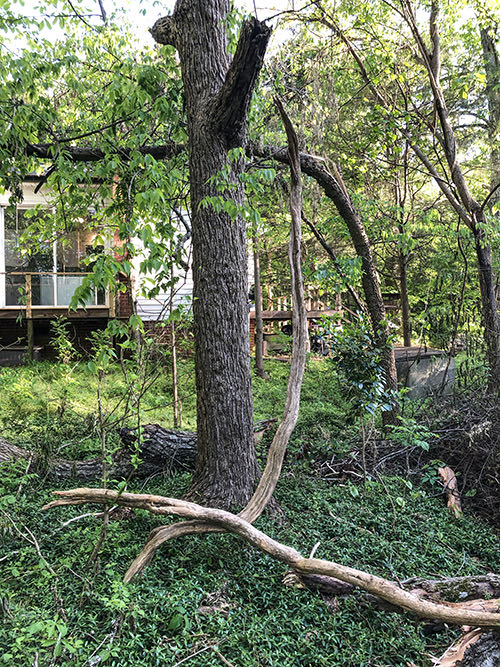
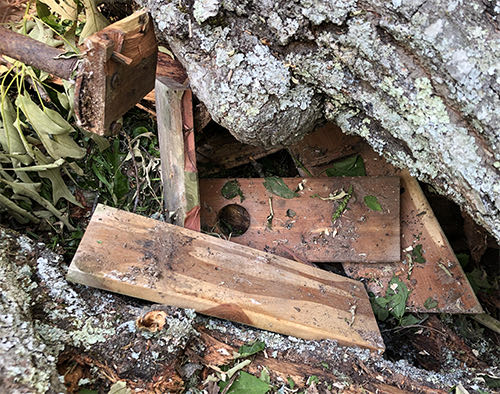
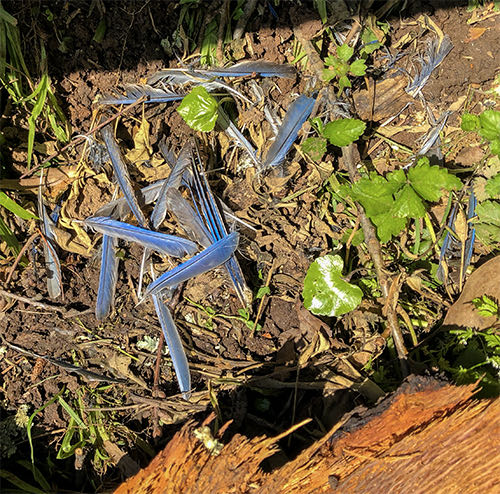
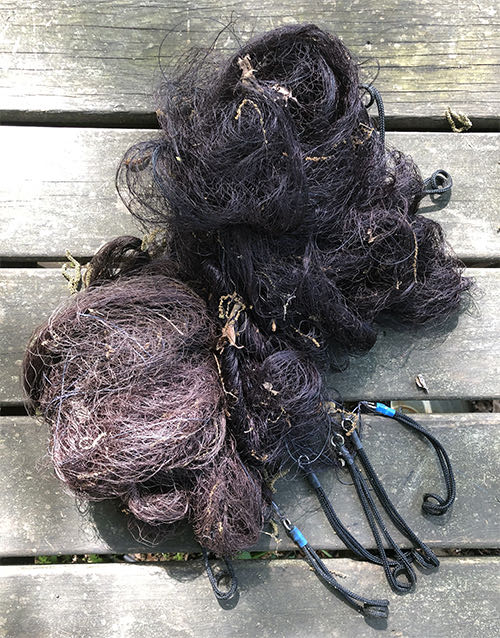
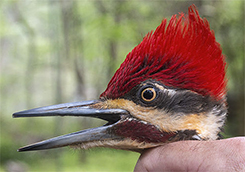 As noted previously, the main section of the big oak fell directly across the midpoint of one net, slamming it into the mud and bending a net pole. Two other nets and pole sets also were destroyed, tangled beneath the jumble of branches beyond the fork in the oak's tall trunk; a fourth mist net--the one that yielded our second-ever Pileated Woodpecker
As noted previously, the main section of the big oak fell directly across the midpoint of one net, slamming it into the mud and bending a net pole. Two other nets and pole sets also were destroyed, tangled beneath the jumble of branches beyond the fork in the oak's tall trunk; a fourth mist net--the one that yielded our second-ever Pileated Woodpecker 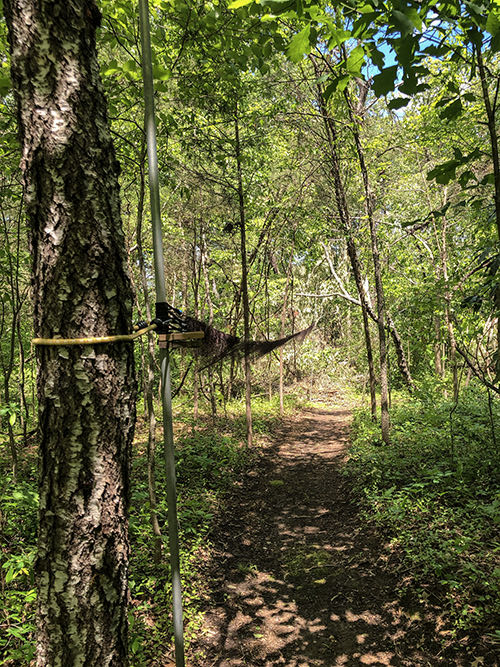
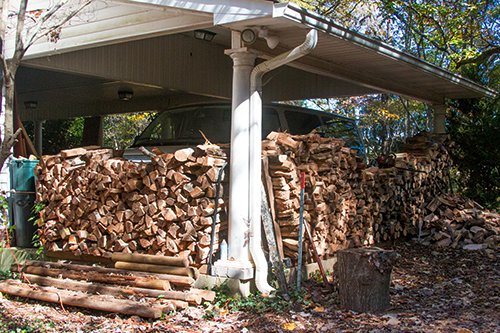
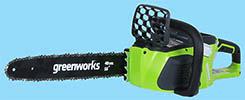 Soon I'll be getting out the
Soon I'll be getting out the 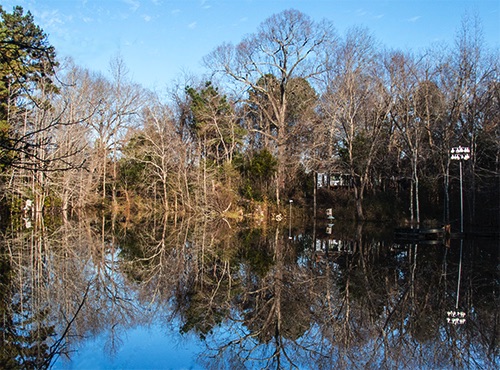
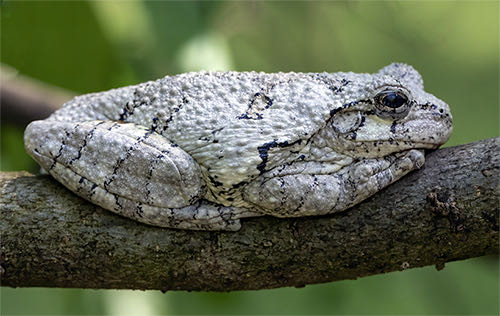
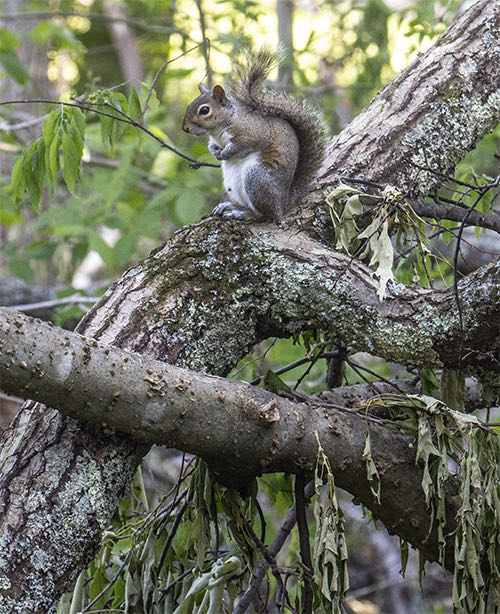
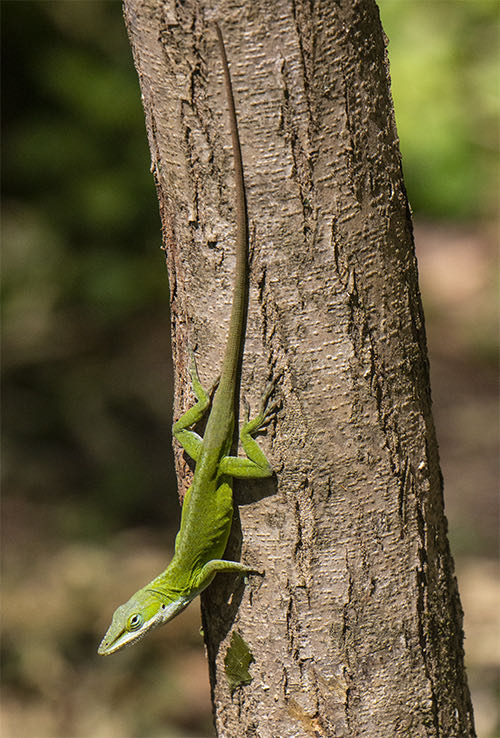
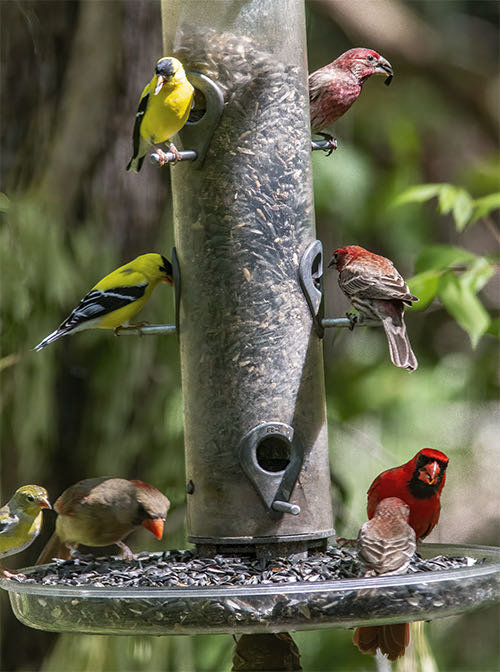
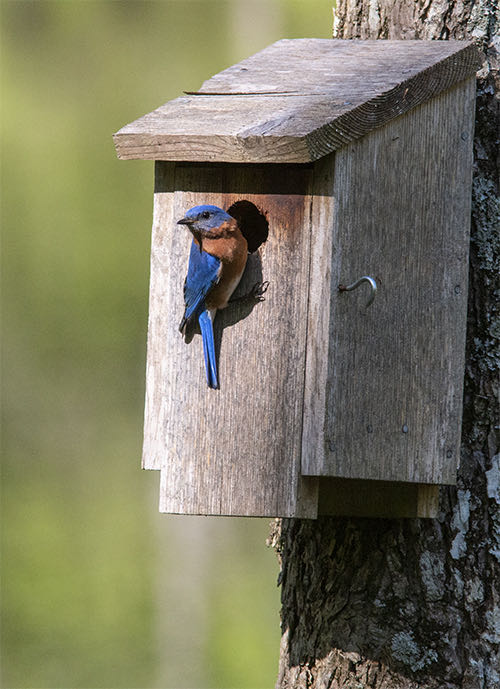
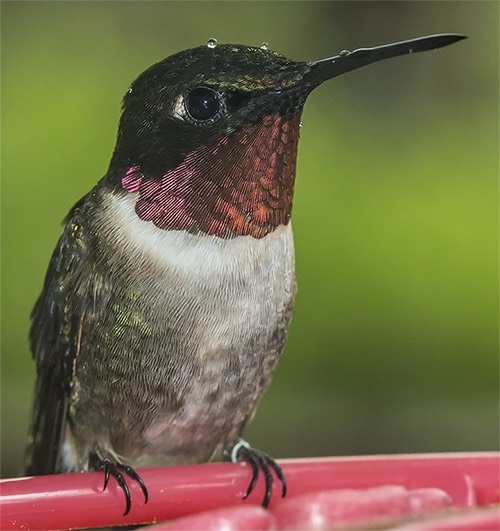
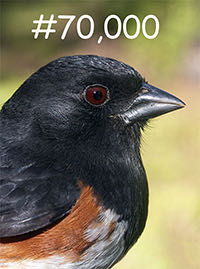 and with destruction of mist nets and the lanes in which they were positioned, a
and with destruction of mist nets and the lanes in which they were positioned, a 









 Please report your
Please report your